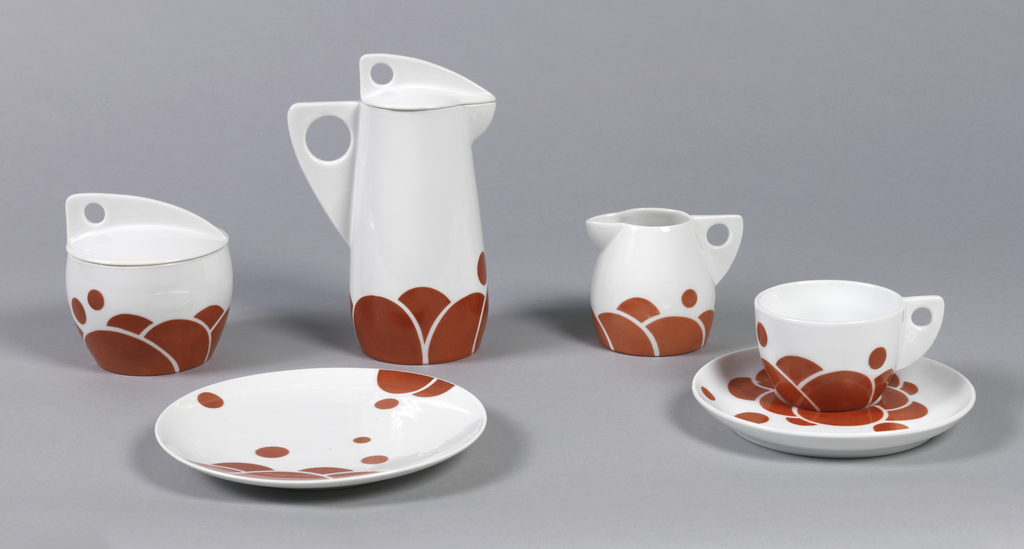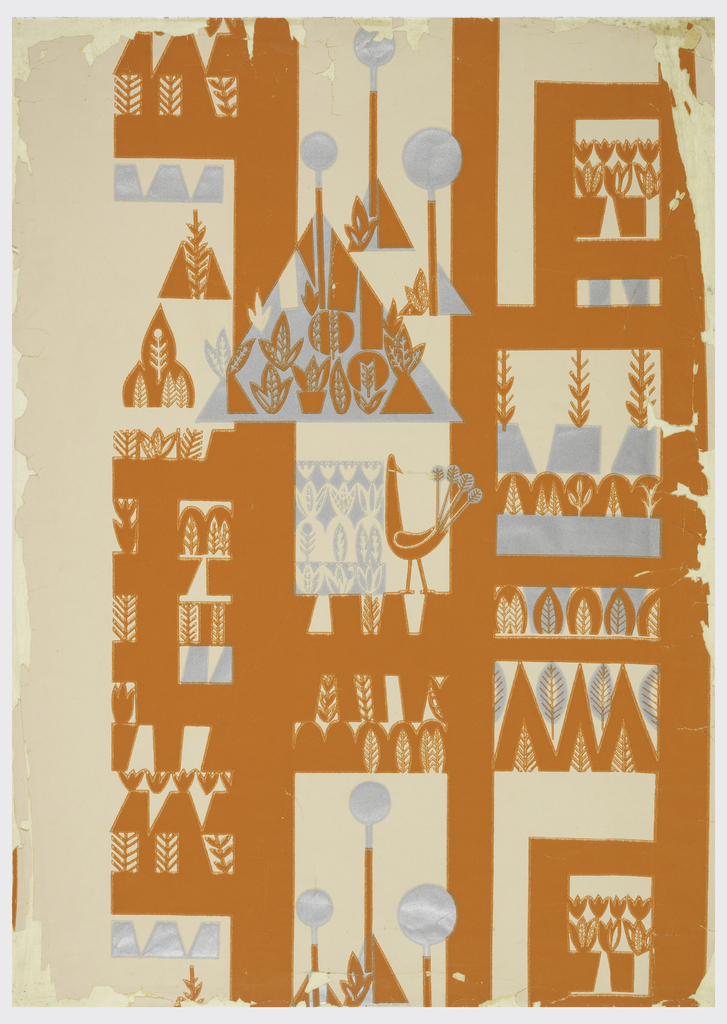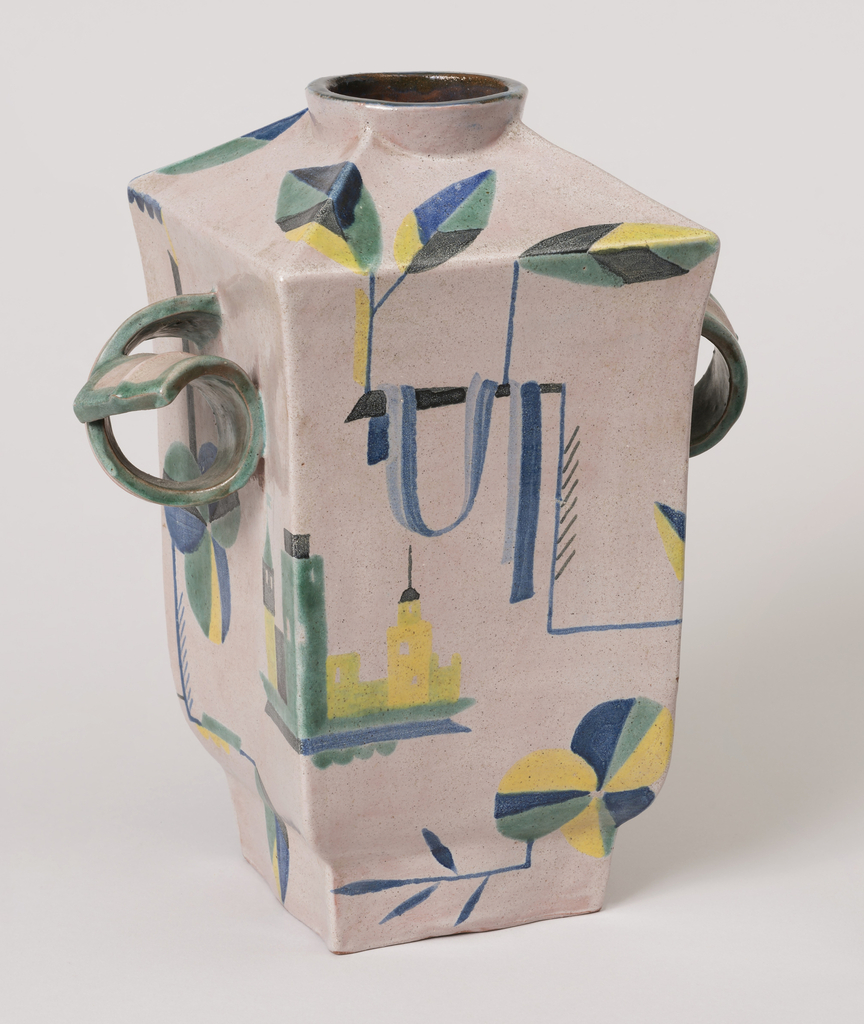This group of lace doilies and inserts were produced in 1922 by the Wiener Werkstätte under the direction of Dagobert Peche (Austrian, 1887–1923). All four are handmade, but were produced in multiples as both the round doilies and square insert with a male figure are remarkably similar to ones found in the collection at MAK...
In celebration of Women’s History Month, March Object of the Day posts highlight women designers in the collection. Today’s blog post was written by Adriane Dalton and originally published on September 17, 2013. Born in 1877, Jutta Sika was an Austrian designer working in a variety of different media. Sika received formal training in both...
In celebration of Women’s History Month, March Object of the Day posts highlight women designers in the collection. This wallpaper delights with its lively motifs of birds and plants and playful stylization. The bright colors and presence of nature injects an otherwise strongly geometric and simplified rendition of an urban landscape with a cheerful energy....
As part of a large collection of nearly 1,500 design drawings produced for the textiles and fashion departments of the Wiener Werkstätte (Viennese Workshops), this selection of gouache on paper textile designs range in date from 1916-18. The three colorways (1988-62-1, 1998-62-2, 1988-62-3) of “Riva See” (“Lake Riva”), a delicate trefoil berry pattern on...
Matilda McQuiad discusses this ombré textile by prominent Austrian designer Dagobert Peche.
Modern Viennese design greatly influenced American style during the Jazz Age. This vase, currently on view in the The Jazz Age: American Style in the 1920s, chronicles this dialogue in the history of modern design. Remarkably, it was one of a pair originally offered in the short-lived Wiener Werkstätte showroom in New York City. Established in 1921...
This lively sidewall is the work of Felice Rix-Ueno, a designer who produced numerous textile and wallpaper patterns in the 1920s for the Wiener Werkstätte, the famous Viennese production company and artist collective formed in 1903. Her work is an excellent example of late Wiener Werkstätte designs. With the arrival of several female designers beside...
A ubiquitous figure in design history, Josef Hoffmann had a career that spanned more than 50 years. The Austrian architect-designer created this chair for the dining room of the Purkersdorf Sanatorium, located just outside Vienna, and built between 1904 and 1906. Hoffmann designed both the sanatorium’s austere exterior and much of its interior. Hoffmann worked...
Here is an interesting version of a drapery wallpaper design. Wallpapers imitating draperies have been a small but elegant genre since the time of Napolean, when walls draped in fabric were popularized by the design and decorating team of Percier and Fontaine, largely credited with creating the Empire style. Many of the finer papers were...








